July 22nd Scots Book of Days
July 22 34 Mary Magdalene feast day.
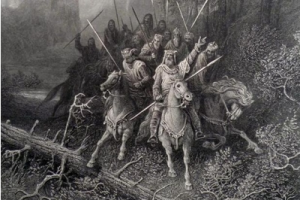 533 circa sometime in the 6th century. In Both sides of the burn: The story of Yoker they write: “It is known that the people of Strathclyde, [Brythonic kingdom in what is now western Scotland] now unprotected, were subjected to fierce attacks by Picts from the north and Angles from the south. After a t
533 circa sometime in the 6th century. In Both sides of the burn: The story of Yoker they write: “It is known that the people of Strathclyde, [Brythonic kingdom in what is now western Scotland] now unprotected, were subjected to fierce attacks by Picts from the north and Angles from the south. After a t
errific and protacted struggle in which the fortunes of war, the invaders were finally and decisively routed in the 6th century by King Arthur and his son Owen, Prince of Lennox, who on the death of his father became King of Strathclyde.”
templum.freeserve.co.uk/history/strathclyde/arthur.htm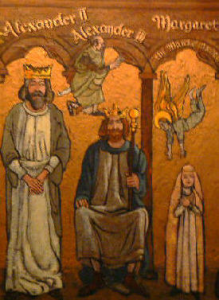
www.heraldscotland.com On the trail of King Arthur.
1210 – Joan of England, Queen of Scots, born, wife of Alexander II of Scotland (d. 1238)
www.historic-uk.com
1298 Battle of Falkirk.
2004 The Crimean War FDC with the BATTLE OF FALKIRK SHS Sir William Wallace ![]() vs Edward (King of England, later called the 1st).
vs Edward (King of England, later called the 1st).![]() (TG7-89). The army of the English King Edward I, using longbows for the first time, .
(TG7-89). The army of the English King Edward I, using longbows for the first time, . 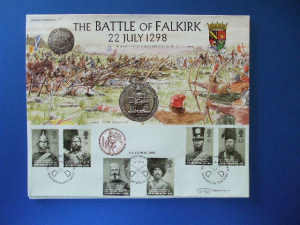 First War of Scottish Independence. Clan Jardine support of the English. The infantry, spearmen, held ground against repeated changes by the English horse, and lancers and archers, but gave way without support from the Scot horse. Wallace resigns as governor, and Robert Bruce, John Comyn, John de Soulis and William Lamberton, Bishop of St. Andrews are chosen as guardians. Tytler’s Britannica.
First War of Scottish Independence. Clan Jardine support of the English. The infantry, spearmen, held ground against repeated changes by the English horse, and lancers and archers, but gave way without support from the Scot horse. Wallace resigns as governor, and Robert Bruce, John Comyn, John de Soulis and William Lamberton, Bishop of St. Andrews are chosen as guardians. Tytler’s Britannica.
Clan Graham Sir John de Graham, hero of the Wars of Independence, rescued William Wallace at Queensberry, becoming one of Wallace’s few close friends and perhaps 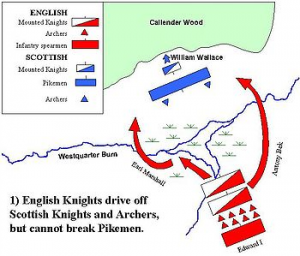 his most trusted adviser. William Wallace was at his side when Graham was killed in 1298 at the battle of Falkirk. .” The grave of hero Sir John in Falkirk churchyard is still to be seen, with table stones of three successive periods above it One great two-handed sword of Sir John the Graham is preserved at Buchanan Castle by the Duke of Montrose;vanother was long in possession of the Grahams of Orchil, and is now treasured by the Free Mason Lodge at Auchterarder.
his most trusted adviser. William Wallace was at his side when Graham was killed in 1298 at the battle of Falkirk. .” The grave of hero Sir John in Falkirk churchyard is still to be seen, with table stones of three successive periods above it One great two-handed sword of Sir John the Graham is preserved at Buchanan Castle by the Duke of Montrose;vanother was long in possession of the Grahams of Orchil, and is now treasured by the Free Mason Lodge at Auchterarder.
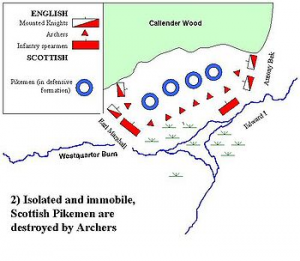 John Stewart in The Grahams, states that “Most Scottish Clans would be proud to have one great hero. The Grahams have three. He refers to Sir John, James Graham, 1st Marquess of Montrose and John Graham, 1st Viscount of Dundee
John Stewart in The Grahams, states that “Most Scottish Clans would be proud to have one great hero. The Grahams have three. He refers to Sir John, James Graham, 1st Marquess of Montrose and John Graham, 1st Viscount of Dundee
Sir John Stewart of Bonkill, Berwickshire (c. 1245-July 22, 1298), described as the “second son” who married the Bonkill heiress, had seven sons and one daughter, and was killed in the Battle of Falkirk.Wikipedia.org.
Wallace defeated at the Battle of Falkirk – 1298. Edward I takes control of the English army and defeats Wallace at Falkirk. Wallace escapes but the Scottish nobles, including Bruce, surrender to Edward. Video: A history of Scotland: Hammers of the Scots. http://www.bbc.co.uk/scotland/history/wars_of_independence/ wallace_defeated_at_the_battle_of_falkirk
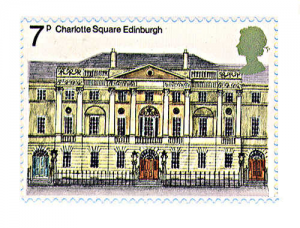 1461 Louis XI reign in France. Wives Margaret of Scotland and Charlotte of Savoy. League of the Public Weal from 1465 was an alliance of feudal nobles organized in 1465 in defiance of the centralized authority of King Louis XI of France. It was masterminded by Charles the Bold, Count of Charolais, son of the Duke of Burgundy, with the king’s brother Charles, Duke of Berry, as a figurehead.
1461 Louis XI reign in France. Wives Margaret of Scotland and Charlotte of Savoy. League of the Public Weal from 1465 was an alliance of feudal nobles organized in 1465 in defiance of the centralized authority of King Louis XI of France. It was masterminded by Charles the Bold, Count of Charolais, son of the Duke of Burgundy, with the king’s brother Charles, Duke of Berry, as a figurehead.
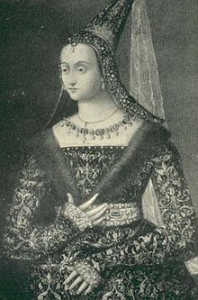 Margaret of Scotland Dauphine of Viennois. (Perth, Scotland 25 December 1424 – 16 August 1445). (married 25 June 1436, age 11, daughter of James I King of Scots and Queen Joan Beaufort). Sister of James 2nd King of Scots.
Margaret of Scotland Dauphine of Viennois. (Perth, Scotland 25 December 1424 – 16 August 1445). (married 25 June 1436, age 11, daughter of James I King of Scots and Queen Joan Beaufort). Sister of James 2nd King of Scots.
1484 Battle of Lochmaben Fair (1484) Anglo-Scottish Wars. Between Scottish loyalists to James III of Scotland and the rebels Alexander Stewart, Duke of Albany and James Douglas, 9th Earl of Douglas, leading cavalry from England. Both exiles from Scotland, Albany and Douglas invaded with permission but not support of Richard III of England, headed to Lochmaben. The Douglas was captured by son of Kirkpatrick of Closeburn. ‘Carry me to the king, thou art well entitled to profit by my misfortune; for thou wast true to me whilst I was true to myself.’ Douglas was sent to a monastery. Anderson Scots v.2/p.44.
Kirkpatrick.  Crest; Dagger hand held. Motto I make sure.
Crest; Dagger hand held. Motto I make sure.
1637 Saturday. Edirburgh, St. Giles. James Hannay, Dean of Edinburgh, is reviewing the Collects, part of the prescribed service from the Common Book of Prayer, before the first reading the next Sunday July 23, 1637. The history of Scotland, England and America are about to change. Adherents to the Church of Scotland Opposed the practice of the Common Prayer book. Riots start. The riots will lead to the Bishops’ Wars, then to the English Civil Wars, mass migrations of Puritans, filling in the recent founding of New Haven Colony 1636, then Stamford 1638, to be combined with 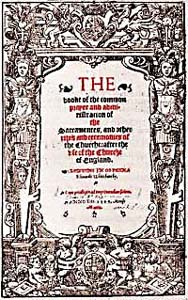 Hartford and Old Saybrook into the Connecticut colony. The turmoil stimulated emigration to the prior non Anglican settlements in Boston (1630), Rhode Island (1636), and the Carolinas.
Hartford and Old Saybrook into the Connecticut colony. The turmoil stimulated emigration to the prior non Anglican settlements in Boston (1630), Rhode Island (1636), and the Carolinas.
Cranmer’s 1549 Book of Common Prayer. Translated into English, Communion service was included, in 1549, in a full prayer book, set out with daily offices, readings for Sundays and Holy Days, the Communion Service, Public Baptism, of Confirmation, of Matrimony, The Visitation of the Sick, At a Burial and the Ordinal (added in 1550) (Gibson 1910). The Preface to this edition, which contained Cranmer’s explanation as to why a new prayer book was necessary, began: “There was never any thing by the wit of man so well devised, or so sure established, which in continuance of time hath not been corrupted.” Wikipedia.
1646 Siege of Worcester ended with the surrender of Royalist garrison
1679 – Battle of Bothwell Bridge.
Brus or Bruce 1050 2Stewart2Kennedy 2Montgomery2Blair 2Cochrane2Miller 2Simmons2Choate zoe ToaG
Bruce of Earlshall was coming upon the Camerons with a superior force of infantry and dragoons. (TG52-253)
Bothwell Hepburn 1245 2Montgomerie2Blair 2Cochrane2Miller2Simmons2Choate zoe ToaG
Sir Walter Scott gives the date of the Battle of Bothwell Bridge as 22 July 1680.
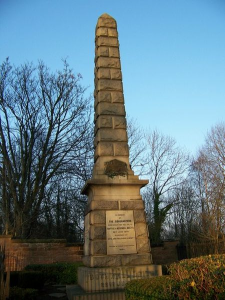 The battle is a central event in Sir Walter Scott’s 1816 novel, Old Mortality. Scott fictionalises the battle and the events leading up to it, introducing real people who were not actually present, such as General Tam Dalyell, as well as his own fictional characters. However, his description of the flow of the battle is considered accurate. Wikipedia-
The battle is a central event in Sir Walter Scott’s 1816 novel, Old Mortality. Scott fictionalises the battle and the events leading up to it, introducing real people who were not actually present, such as General Tam Dalyell, as well as his own fictional characters. However, his description of the flow of the battle is considered accurate. Wikipedia-
Wikipedia gives the date as 22 June 1679 taken from the the 224th anniversary of the battle, 1903, for the monument dedicated on the site. The bridge over the River Clyde in Hamilton, South Lanarkshire near Bothwell in Lanarkshire, Scotland. In memory of THE COVENANTERS *** BATTLE OF BOTHWELL BRIDGE 22nd June 1679
1680 – Sanquhar occupied by Richard Cameron. Insurgent Presbyterians sect separate from moderates, disowned King’s authority and government, renounced title of all pretenders who would not subscribe to the Solemn League and Covenant. (TG52-252) roamed Dumfries and Ayr. Wanderers attacked at Airs Moss, ” Lord, spare the green and take the ripe.” Cameron then addressed his followers with great firmness, exhorting them to fight to the very last, ” For I see,” he added, ” heaven’s gates open to receive all such as shall die this day.” Many died. YYMA 26 In 1680, the King’s (Charles 2nd) brother James, Duke of York, arrived in Edinburgh as the new High Commissioner. This heir to the throne was a Papist (Catholic). The Scots Parliament formally recognized his right to the throne, but provided a test (oath) to be taken by all holders of office in church and state, certifying that they abjured the Covenants but adhered to Protestantism and promised to seek no alteration in either church or state government. Additional ministers were deprived for refusing to take this test. Death was prescribed for field preaching (meaning assemblies away from the parish churches where the government could monitor preaching – leads to the First Amendment of the U.S. Constitution freedom of assembly). Death – summary execution -was enforced, so this was referred to as the ‘killing time’.
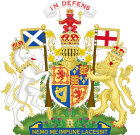 1706 Treaty of Union agreed. Kingdoms of England and Scotland create the Kingdom of Great Britain.
1706 Treaty of Union agreed. Kingdoms of England and Scotland create the Kingdom of Great Britain.
Parliament of Scotland Act Ratifying and Approving the Treaty of Union of the Two Kingdoms of SCOTLAND and ENGLAND. Anne c. 7. The Scots’ financial distress from the lost Darien colony opened up this union.
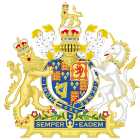 Parliament of England An Act for a Union of the Two Kingdoms of England and Scotland 6 Anne c. 11. The Acts took effect on 1 May 1707 and are referred to as the Union of the Parliaments.
Parliament of England An Act for a Union of the Two Kingdoms of England and Scotland 6 Anne c. 11. The Acts took effect on 1 May 1707 and are referred to as the Union of the Parliaments.
1745 July 22 PRINCE CHARLES EDWARD STUART Sighted Bemera 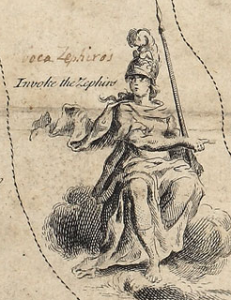 (of Barra) Island (I. 288).
(of Barra) Island (I. 288).
1812 Battle of Salamanca, Spain, east of Ciudad Rodrigo, Peninsular War. Lord Wellington commanding. Coldstream Foot Guards,
1st Foot, the Royal Scots. 42nd Foot (Highlanders), the Black Watch (the Royal Highland Regiment. 74th Foot (Highlanders), the Highland Light Infantry and now the Royal Highland Fusiliers
79th Foot (Highlanders), the Queen’s Own 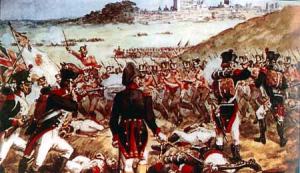 Cameron Highlanders, then the Queen’s Own Highlanders and now the Highlanders.*
Cameron Highlanders, then the Queen’s Own Highlanders and now the Highlanders.*
Battle of Salamanca
1813 Peter McQueen, (c. 1780 – 1820) Creek (Muscogee) military leader, father was a Scots fur trader. On July 22, 1813 he won the Battle of Burnt Corn Creek in Escambia County, Alabama, near the border with Conecuh County, as part of the Creek War.
1824 Claud Irvine Boswell died. He had married, in 1783, Miss Anne Irvine, who, by the death of her brother and grandfather, became heiress of Kincoussie. He left one son and two daughters.
Boswell of Auchinleck Ayr 13c 2Arnot2Colville 2Semple 2Montgomerie2Cochrane 2Miller2Simmons 2Choate zoe ToaG
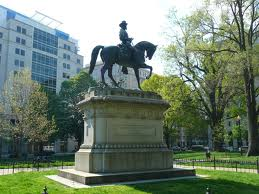 1864 – James B. McPherson, died, Union army Major general, (b. 1828 July 22) (aged 35). Died in the Battle of Atlanta, American Civil War, Battle of Fort Henry, Battle of Fort Donelson, Battle of Shiloh, Siege of Vicksburg, Battle of Marietta, Atlanta Campaign. At Battle of Atlanta – McPherson second highest ranking Union officer killed during the war and the only commander of a Union army to die in the field. McPherson Square in Washington, D.C., and its Metro rail station are named in the general’s honor. Here is a statue of McPherson on horseback.
1864 – James B. McPherson, died, Union army Major general, (b. 1828 July 22) (aged 35). Died in the Battle of Atlanta, American Civil War, Battle of Fort Henry, Battle of Fort Donelson, Battle of Shiloh, Siege of Vicksburg, Battle of Marietta, Atlanta Campaign. At Battle of Atlanta – McPherson second highest ranking Union officer killed during the war and the only commander of a Union army to die in the field. McPherson Square in Washington, D.C., and its Metro rail station are named in the general’s honor. Here is a statue of McPherson on horseback. 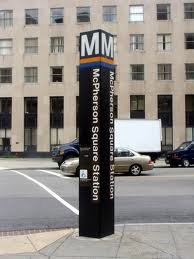 In 2012, McPherson square was cluttered with ‘occupy’ Washington, tents, trash, and porta potties. McPherson Square Station pole, Washington D.C.
In 2012, McPherson square was cluttered with ‘occupy’ Washington, tents, trash, and porta potties. McPherson Square Station pole, Washington D.C.
1969 Apollo 11 the first manned landing on the Moon is a third of the way returning to earth. Launched by a Saturn V rocket from Kennedy Space Center in Merritt Island, Florida
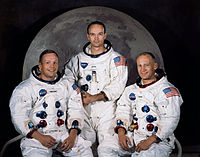 Left to right: Armstrong, Collins, Aldrin (Armstrong and Aldrin had Scots ancestry).
Left to right: Armstrong, Collins, Aldrin (Armstrong and Aldrin had Scots ancestry).
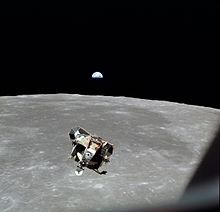 Eagle’s ascent stage approaching Columbia.
Eagle’s ascent stage approaching Columbia.
2015 Coming Soon.
http://www.tartansauthority.com/blog/coming-soon-2015/
Disclaimer: The author of each article published on this web site owns his or her own words. The opinions, beliefs and viewpoints expressed by the various authors and forum participants on this site do not necessarily reflect the opinions, beliefs and viewpoints of Utah Standard News or official policies of the USN and may actually reflect positions that USN actively opposes. No claim in public domain or fair use. © John Choate
July 22 34 Mary Magdalene feast day.
533 circa sometime in the 6th century. In Both sides of the burn: The story of Yoker they write: “It is known that the people of Strathclyde, [Brythonic kingdom in what is now western Scotland] now unprotected, were subjected to fierce attacks by Picts from the north and Angles from the south. After a t
errific and protacted struggle in which the fortunes of war, the invaders were finally and decisively routed in the 6th century by King Arthur and his son Owen, Prince of Lennox, who on the death of his father became King of Strathclyde.”
http://www.templum.freeserve.co.uk/history/strathclyde/arthur.htm
www.heraldscotland.com On the trail of King Arthur.
1210 – Joan of England, Queen of Scots, born, wife of Alexander II of Scotland (d. 1238)
www.historic-uk.com
1298 Battle of Falkirk.
2004 THE CRIMEAN WAR FDC WITH THE BATTLE OF FALKIRK SHS
Sir William Wallace vs Edward (King of England, later called the 1st). (TG7-89). The army of the English King Edward I, using longbows for the first time, . First War of Scottish Independence. Clan Jardine support of the English. The infantry, spearmen, held ground against repeated changes by the English horse, and lancers and archers, but gave way without support from the Scot horse. Wallace resigns as governor, and Robert Bruce, John Comyn, John de Soulis and William Lamberton, Bishop of St. Andrews are chosen as guardians. Tytler’s Britannica.
Clan Graham Sir John de Graham, hero of the Wars of Independence, rescued William Wallace at Queensberry, becoming one of Wallace’s few close friends and perhaps his most trusted adviser. William Wallace was at his side when Graham was killed in 1298 at the battle of Falkirk. .” The grave of hero Sir John in Falkirk churchyard is still to be seen, with table stones of three successive periods above it One great two-handed sword of Sir John the Graham is preserved at Buchanan Castle by the Duke of Montrose;vanother was long in possession of the Grahams of Orchil, and is now treasured by the Free Mason Lodge at Auchterarder.
John Stewart in The Grahams, states that “Most Scottish Clans would be proud to have one great hero. The Grahams have three. He refers to Sir John, James Graham, 1st Marquess of Montrose and John Graham, 1st Viscount of Dundee
Sir John Stewart of Bonkill, Berwickshire (c. 1245-July 22, 1298), described as the “second son” who married the Bonkill heiress, had seven sons and one daughter, and was killed in the Battle of Falkirk.
Wikipedia.org.
Wallace defeated at the Battle of Falkirk – 1298. Edward I takes control of the English army and defeats Wallace at Falkirk. Wallace escapes but the Scottish nobles, including Bruce, surrender to Edward. Video: A history of Scotland: Hammers of the Scots. http://www.bbc.co.uk/scotland/history/wars_of_independence/wallace_defeated_at_the_battle_of_falkirk
1461 Louis XI reign in France. Wives Margaret of Scotland and Charlotte of Savoy. League of the Public Weal from 1465 was an alliance of feudal nobles organized in 1465 in defiance of the centralized authority of King Louis XI of France. It was masterminded by Charles the Bold, Count of Charolais, son of the Duke of Burgundy, with the king’s brother Charles, Duke of Berry, as a figurehead.
Margaret of Scotland Dauphine of Viennois. (Perth, Scotland 25 December 1424 – 16 August 1445). (married 25 June 1436, age 11, daughter of James I King of Scots and Queen Joan Beaufort). Sister of James 2nd King of Scots.
1484 Battle of Lochmaben Fair (1484) Anglo-Scottish Wars. Between Scottish loyalists to James III of Scotland and the rebels Alexander Stewart, Duke of Albany and James Douglas, 9th Earl of Douglas, leading cavalry from England. Both exiles from Scotland, Albany and Douglas invaded with permission but not support of Richard III of England, headed to Lochmaben. The Douglas was captured by son of Kirkpatrick of Closeburn. ‘Carry me to the king, thou art well entitled to profit by my misfortune; for thou wast true to me whilst I was true to myself.’ Douglas was sent to a monastery. Anderson Scots v.2/p.44.
Kirkpatrick.
Crest; Dagger hand held. Motto I make sure.
1637 Saturday. Edirburgh, St. Giles. James Hannay, Dean of Edinburgh, is reviewing the Collects, part of the prescribed service from the Common Book of Prayer, before the first reading the next Sunday July 23, 1637. The history of Scotland, England and America are about to change. Adherents to the Church of Scotland Opposed the practice of the Common Prayer book. Riots start. The riots will lead to the Bishops’ Wars, then to the English Civil Wars, mass migrations of Puritans, filling in the recent founding of New Haven Colony 1636, then Stamford 1638, to be combined with Hartford and Old Saybrook into the Connecticut colony. The turmoil stimulated emigration to the prior non Anglican settlements in Boston (1630), Rhode Island (1636), and the Carolinas.
Cranmer’s 1549 Book of Common Prayer. Translated into English, Communion service was included, in 1549, in a full prayer book, set out with daily offices, readings for Sundays and Holy Days, the Communion Service, Public Baptism, of Confirmation, of Matrimony, The Visitation of the Sick, At a Burial and the Ordinal (added in 1550) (Gibson 1910). The Preface to this edition, which contained Cranmer’s explanation as to why a new prayer book was necessary, began: “There was never any thing by the wit of man so well devised, or so sure established, which in continuance of time hath not been corrupted.” Wikipedia.
1646 Siege of Worcester ended with the surrender of Royalist garrison
1679 – Battle of Bothwell Bridge.
Brus or Bruce 1050 2Stewart2Kennedy 2Montgomery2Blair 2Cochrane2Miller 2Simmons2Choate zoe ToaG
Bruce of Earlshall was coming upon the Camerons with a superior force of infantry and dragoons. (TG52-253)
Bothwell Hepburn 1245 2Montgomerie2Blair 2Cochrane2Miller2Simmons2Choate zoe ToaG
Sir Walter Scott gives the date of the Battle of Bothwell Bridge as 22 July 1680.
The battle is a central event in Sir Walter Scott’s 1816 novel, Old Mortality. Scott fictionalises the battle and the events leading up to it, introducing real people who were not actually present, such as General Tam Dalyell, as well as his own fictional characters. However, his description of the flow of the battle is considered accurate. Wikipedia –
Wikipedia gives the date as 22 June 1679 taken from the the 224th anniversary of the battle, 1903, for the monument dedicated on the site. The bridge over the River Clyde in Hamilton, South Lanarkshire near Bothwell in Lanarkshire, Scotland.
In memory of THE COVENANTERS *** BATTLE OF BOTHWELL BRIDGE 22nd June 1679
1680 – Sanquhar occupied by Richard Cameron. Insurgent Presbyterians sect separate from moderates, disowned King’s authority and government, renounced title of all pretenders who would not subscribe to the Solemn League and Covenant. (TG52-252) roamed Dumfries and Ayr. Wanderers attacked at Airs Moss, ” Lord, spare the green and take the ripe.” Cameron then addressed his followers with great firmness, exhorting them to fight to the very last, ” For I see,” he added, ” heaven’s gates open to receive all such as shall die this day.” Many died. YYMA 26 In 1680, the King’s (Charles 2nd) brother James, Duke of York, arrived in Edinburgh as the new High Commissioner. This heir to the throne was a Papist (Catholic). The Scots Parliament formally recognized his right to the throne, but provided a test (oath) to be taken by all holders of office in church and state, certifying that they abjured the Covenants but adhered to Protestantism and promised to seek no alteration in either church or state government. Additional ministers were deprived for refusing to take this test. Death was prescribed for field preaching (meaning assemblies away from the parish churches where the government could monitor preaching – leads to the First Amendment of the U.S. Constitution freedom of assembly). Death – summary execution -was enforced, so this was referred to as the ‘killing time’.
1706 Treaty of Union agreed. Kingdoms of England and Scotland create the Kingdom of Great Britain.
Parliament of Scotland Act Ratifying and Approving the Treaty of Union of the Two Kingdoms of SCOTLAND and ENGLAND. Anne c. 7. The Scots’ financial distress from the lost Darien colony opened up this union.
Parliament of England An Act for a Union of the Two Kingdoms of England and Scotland 6 Anne c. 11.
The Acts took effect on 1 May 1707 and are referred to as the Union of the Parliaments.
1745 July 22 PRINCE CHARLES EDWARD STUART Sighted Bemera (of Barra) Island (I. 288).
1812 Battle of Salamanca, Spain, east of Ciudad Rodrigo, Peninsular War. Lord Wellington commanding. Coldstream Foot Guards, 1st Foot, the Royal Scots. 42nd Foot (Highlanders), the Black Watch (the Royal Highland Regiment. 74th Foot (Highlanders), the Highland Light Infantry and now the Royal Highland Fusiliers 79th Foot (Highlanders), the Queen’s Own Cameron Highlanders, then the Queen’s Own Highlanders and now the Highlanders.*
Battle of Salamanca
1813 Peter McQueen, (c. 1780 – 1820) Creek (Muscogee) military leader, father was a Scots fur trader. On July 22, 1813 he won the Battle of Burnt Corn Creek in Escambia County, Alabama, near the border with Conecuh County, as part of the Creek War.
1824 Claud Irvine Boswell died. He had married, in 1783, Miss Anne Irvine, who, by the death of her brother and grandfather, became heiress of Kincoussie. He left one son and two daughters.
Boswell of Auchinleck Ayr 13c 2Arnot2Colville 2Semple 2Montgomerie2Cochrane 2Miller2Simmons 2Choate zoe ToaG
1864 – James B. McPherson, died, Union army Major general, (b. 1828 July 22) (aged 35). Died in the Battle of Atlanta, American Civil War, Battle of Fort Henry, Battle of Fort Donelson, Battle of Shiloh, Siege of Vicksburg, Battle of Marietta, Atlanta Campaign. At Battle of Atlanta – McPherson second highest ranking Union officer killed during the war and the only commander of a Union army to die in the field.
McPherson Square in Washington, D.C., and its Metro rail station are named in the general’s honor. Here is a statue of McPherson on horseback. In 2012, McPherson square was cluttered with ‘occupy’ Washington, tents, trash, and porta potties.
McPherson Square Station pole, Washington D.C.
1969 Apollo 11 the first manned landing on the Moon is a third of the way returning to earth. Launched by a Saturn V rocket from Kennedy Space Center in Merritt Island, Florida
Left to right: Armstrong, Collins, Aldrin (Armstrong and Aldrin had Scots ancestry).
Eagle’s ascent stage approaching Columbia.
2015 Coming Soon.
http://www.tartansauthority.com/blog/coming-soon-2015/
Disclaimer: The author of each article published on this web site owns his or her own words. The opinions, beliefs and viewpoints expressed by the various authors and forum participants on this site do not necessarily reflect the opinions, beliefs and viewpoints of Utah Standard News or official policies of the USN and may actually reflect positions that USN actively opposes. No claim in public domain or fair use. © John Choate
Utah Standard News depends on the support of readers like you.
Good Journalism requires time, expertise, passion and money. We know you appreciate the coverage here. Please help us to continue as an alternative news website by becoming a subscriber or making a donation. To learn more about our subscription options or make a donation, click here.
To Advertise on UtahStandardNews.com, please contact us at: ed@utahstandardnews.com.



Comments - No Responses to “July 22nd Scots Book of Days”
Sure is empty down here...